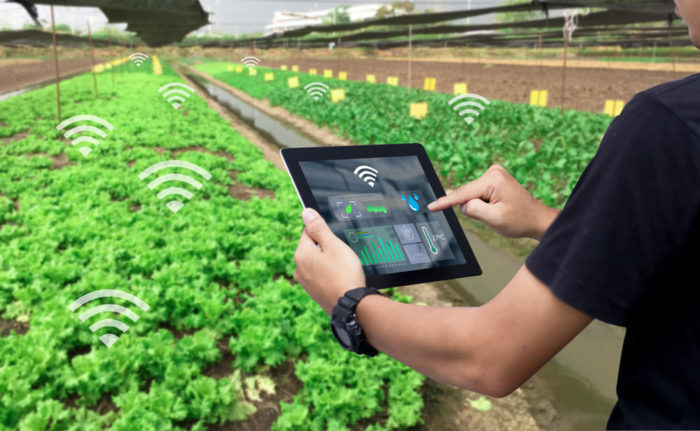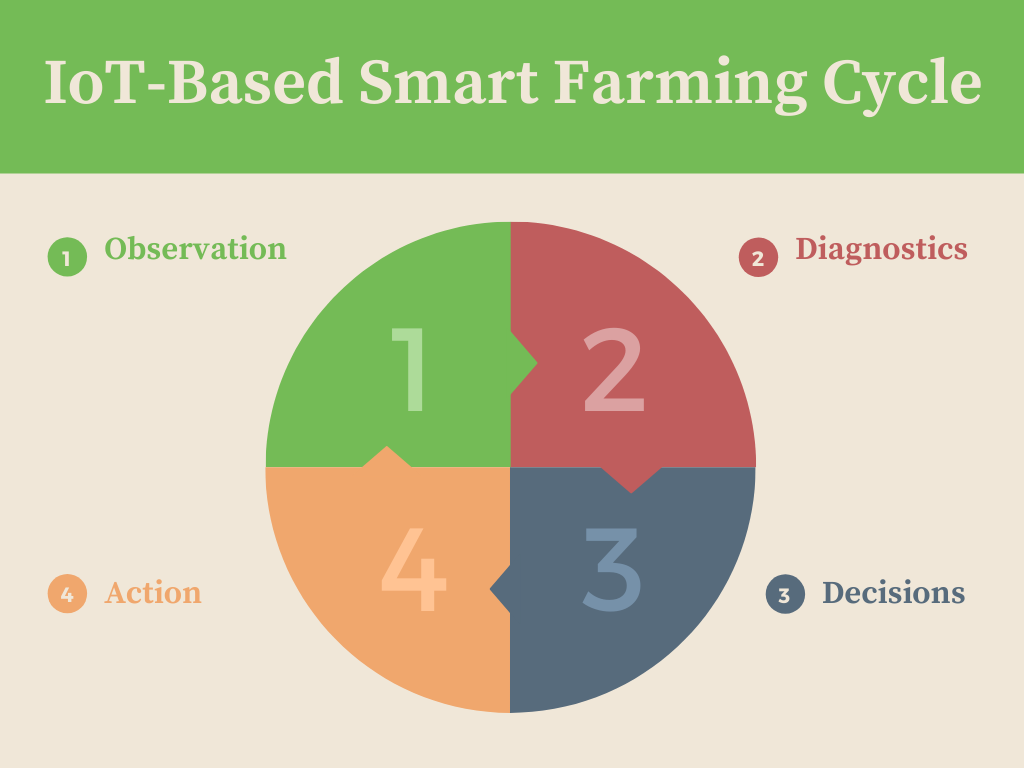
IoT-Based Smart Farming Cycle
Internet of Things (IoT) is based on the data you can draw from things (“T”) and transmit over the Internet (“I”). To optimize the farming process, IoT devices installed on a farm should collect and process data in a repetitive cycle that enables farmers to react quickly to emerging issues and changes in ambient conditions. Smart farming works on the following cycle:1. Observation
Sensors record observational data from the crops, livestock, soil, or atmosphere.2. Diagnostics
The sensor values are fed to a cloud-hosted IoT platform with predefined decision rules and models—also called “business logic”—that ascertain the condition of the examined object and identify any deficiencies or needs.3. Decisions
After issues are revealed, the user, and/or machine learning-driven components of the IoT platform determine whether location-specific treatment is necessary and if so, which.4. Action
After end-user evaluation and action, the cycle repeats from the beginning.
Benefits of Smart Farming
The application of modern technologies has a positive impact on agriculture and cattle farming. Let's take a look at some of these advantages:- Increased production: the optimisation of all the processes related to agriculture and livestock-rearing increases production rates.
- Water saving: weather forecasts and sensors that measure soil moisture mean watering only when necessary and for the right length of time.
- Better quality: analysis of the quality of the produce obtained in relation to the strategies applied makes adjustments possible to increase subsequent production quality.
- Reduced costs: automation of sowing, treatments and harvesting in the case of agriculture reduces the use of resources.
- Pest detection and animal health: early detection of infestations in crops or sickness in animals means that their impact on production can be minimised and animal welfare improved.
- Better sustainability: saving resources like irrigation water and getting maximum benefit from the land reduce the impact on the environment.
Credits: https://www.iotforall.com/smart-farming-future-of-agriculture
https://www.iberdrola.com/innovation/smart-farming-precision-agriculture
